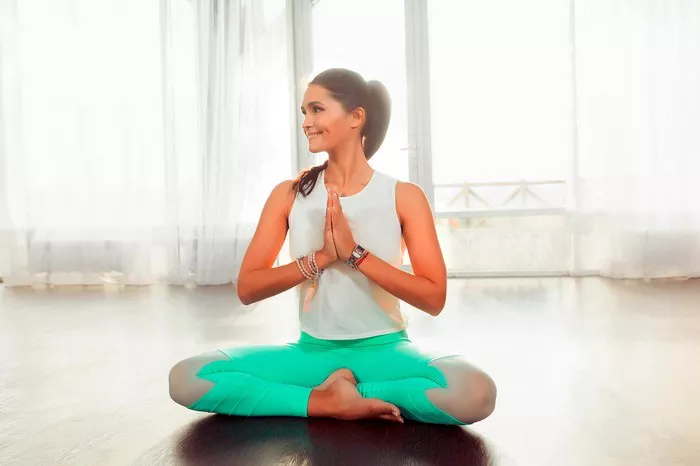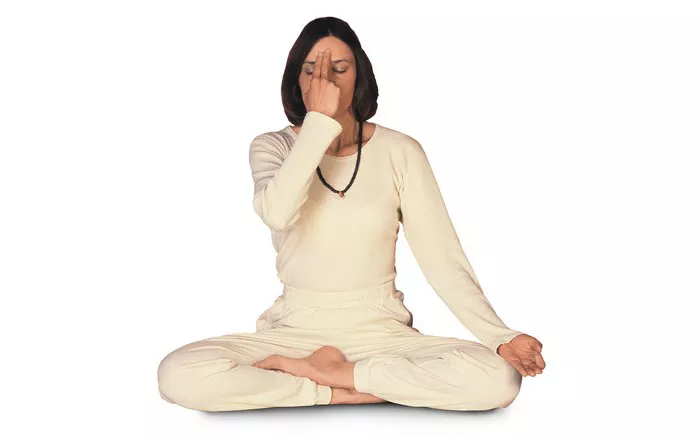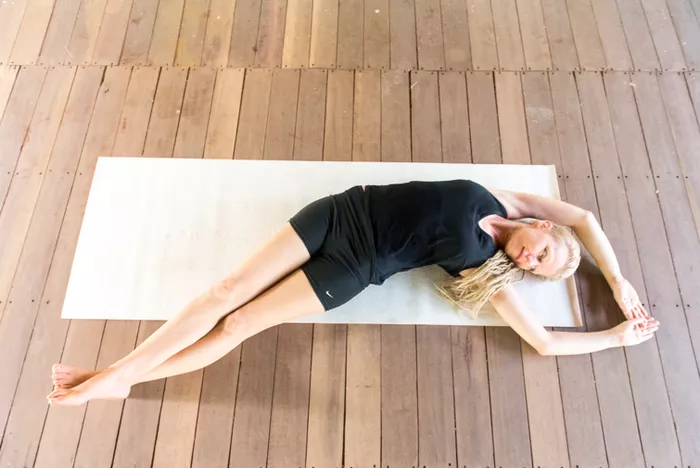The Split Yoga pose, also known as Hanumanasana, is a deeply advanced yoga posture that challenges the flexibility and strength of the practitioner. Derived from Hindu mythology, the pose is named after the deity Hanuman, the monkey god who symbolizes devotion, strength, and courage. Hanuman’s leap from India to Sri Lanka in search of the goddess Sita is mirrored in the physical aspect of the pose — a wide split, resembling the leap of a monkey. Hanumanasana requires significant flexibility, especially in the hips and hamstrings, as well as strength in the core and legs. Although it is an advanced pose, with patience and consistent practice, many yoga practitioners can achieve it over time, gaining numerous physical and mental benefits in the process.
The Mechanics of the Split Yoga Pose
Achieving the Split Yoga pose requires careful attention to alignment, breathing, and muscle engagement. As you perform Hanumanasana, one leg stretches forward, and the other stretches backward, aiming to bring the pelvis to the floor while keeping the torso upright. The front leg should be fully extended, and the back leg should be straight with the knee facing downward. Engaging the quadriceps, lifting the chest, and maintaining an elongated spine are crucial to avoid strain on the lower back. The deeper you can go into the split, the more lengthening and stretching will occur in the inner thighs, hip flexors, and hamstrings. However, it’s important to avoid forcing yourself into the full split — achieving this posture requires patience, and proper preparation with warm-up poses will help minimize the risk of injury.
Key Benefits of the Split Yoga Pose
Flexibility and Mobility
One of the primary benefits of practicing the Split Yoga pose is the enhancement of flexibility, particularly in the lower body. The hamstrings, quadriceps, hip flexors, and groin muscles all receive a deep stretch during this posture. Regular practice of Hanumanasana can increase the range of motion in these areas, which can positively impact daily activities and other physical pursuits. For those who engage in activities like running, cycling, or dancing, the Split pose helps prevent tightness and injuries by maintaining and improving flexibility.
Strength and Stability
While flexibility is often the focus of the Split Yoga pose, it also requires significant strength, particularly in the legs and core. Maintaining the stability of the pose demands engagement of the quadriceps, glutes, and core muscles. These muscles must be activated to prevent the pelvis from sinking too deeply into the floor, ensuring the proper alignment of the spine and the legs. This strengthening aspect of the pose is often underestimated but is crucial to performing Hanumanasana safely and effectively.
How to Safely Practice the Split Yoga Pose
Preparation for the Split Pose
Before attempting the Split Yoga pose, it’s essential to warm up your body properly to avoid injury. A thorough warm-up should include stretches that target the hip flexors, hamstrings, quadriceps, and inner thighs. Poses like Downward Dog, Lunge, Pigeon Pose, and Seated Forward Fold can help open up the hips and lengthen the hamstrings. Spending time in these preparatory poses will allow your muscles to gradually loosen, making it easier to perform the split with control and safety.
Using Props for Support
If you’re working toward achieving Hanumanasana, props can be incredibly useful. Blocks, blankets, or bolsters can provide extra support, especially if you’re unable to fully achieve the split. For instance, placing a block under the pelvis can help lift your hips and reduce the strain on your body while you work on increasing flexibility. A blanket or cushion under the knee of the back leg can also offer comfort and prevent discomfort in the joints. Using props enables you to safely practice the pose, allowing your body to gradually deepen into the stretch without pushing beyond your current flexibility.
Common Mistakes to Avoid in the Split Pose
Overstretching or Forcing the Split
One of the most common mistakes in Hanumanasana is attempting to push too hard into the full split before the body is ready. Overstretching can lead to muscle strain or ligament injuries, particularly in the hamstrings or groin. It’s important to listen to your body and respect its limits. A good practice is to focus on proper alignment and gradually work toward deepening the pose over time rather than forcing yourself into the full split too quickly. Flexibility improves with consistent practice, but patience is key to avoiding injury.
Not Engaging the Core
Another common mistake in the Split Yoga pose is failing to engage the core muscles properly. Without core engagement, the pelvis can tilt excessively, placing unnecessary strain on the lower back. Keeping the core strong throughout the pose helps maintain the integrity of the pelvis and spine, preventing discomfort and injury. To keep the torso upright and balanced, imagine pulling your belly button toward your spine and lifting through the ribcage. Engaging the core will also help you maintain stability and control in the pose.
See Also: What Are Some Fun Two-Person Yoga Poses to Try Together?
The Psychological and Mental Benefits of Hanumanasana
Building Patience and Perseverance
The Split Yoga pose is not only a physical challenge but also a mental one. Achieving Hanumanasana requires patience and perseverance, as it can take months or even years of practice to perform it fully. The process of working toward the split teaches you to be patient with yourself and trust the process. It reminds you that progress in yoga — and in life — is often slow and gradual. Learning to honor the journey rather than fixating on the end result is a valuable lesson that can extend beyond your yoga practice into other aspects of life.
Cultivating Focus and Determination
In addition to patience, Hanumanasana fosters focus and determination. To hold the pose and deepen the stretch, you must maintain concentration on your body’s alignment, breath, and subtle movements. This focused attention helps quiet the mind and cultivates a sense of determination. By committing to the practice, whether or not you can achieve the full split, you strengthen your mental resolve and resilience. The practice of focus in Hanumanasana can also translate to increased concentration in daily tasks and greater mental clarity.
Conclusion
Incorporating the Split Yoga pose into your regular practice can be a rewarding challenge, but it is important to approach it with care and patience. Focus on building flexibility, strength, and balance gradually. Use preparatory poses to prepare your body, and always listen to its cues. Remember that the goal is not necessarily to achieve the perfect split but to enjoy the process of learning and growing in your practice.
For those who are able to master it, Hanumanasana offers numerous benefits. It provides a deep stretch for the hips and legs, strengthens the core, and helps develop mental resilience. Whether you’re striving for the full split or simply aiming to improve your flexibility, practicing the Split Yoga pose can have a transformative impact on both your body and mind. With time, patience, and dedication, the Split pose can become a symbol of your growth, both on and off the mat.
You Might Be Interested In:





















